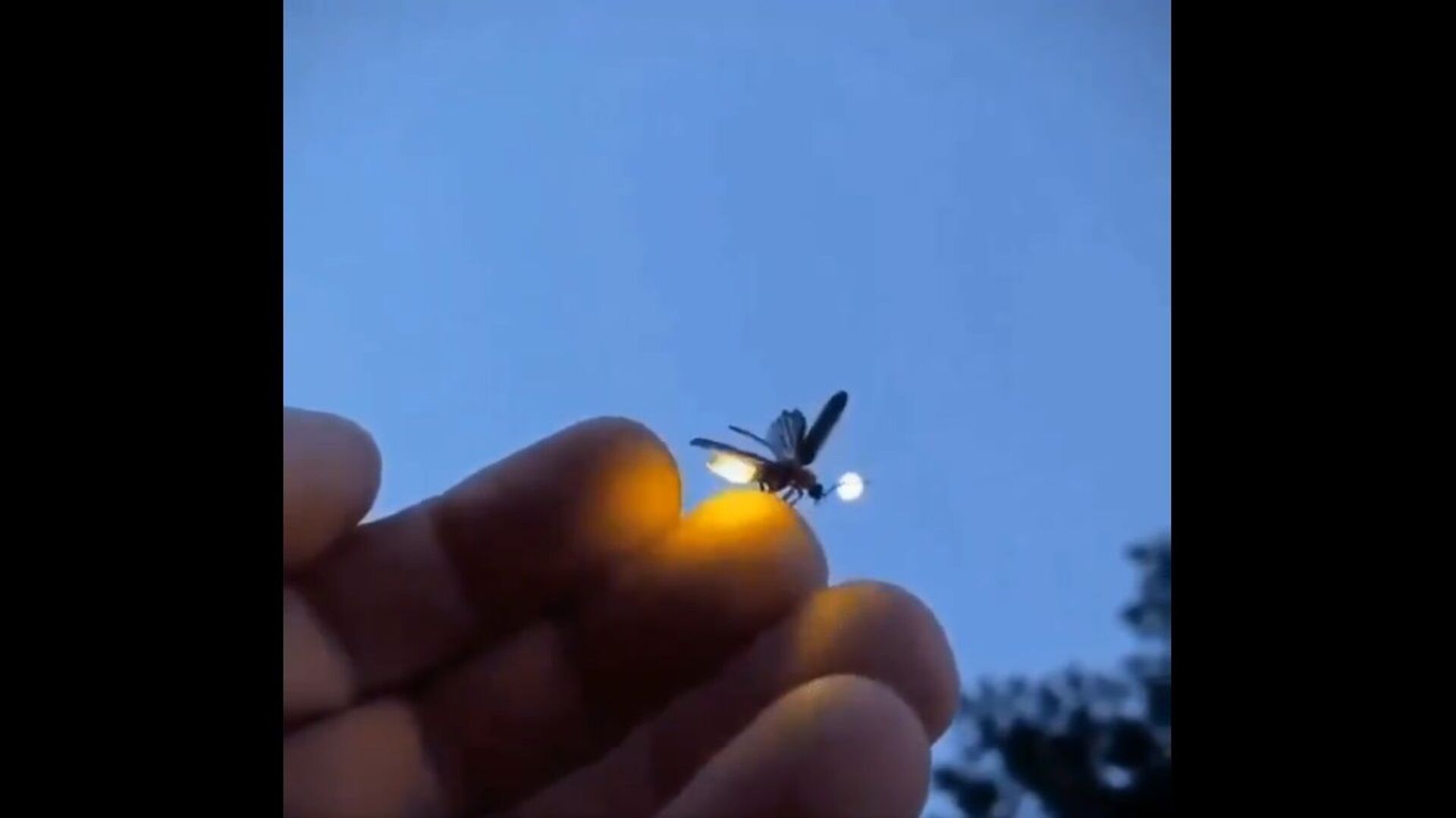https://sputnikglobe.com/20230217/illuminating-discovery-russian-scientists-find-out-how-to-use-fireflies-to-detect-bacteria-1107534974.html
Illuminating Discovery: Russian Scientists Find Out How to Use Fireflies to Detect Bacteria
Illuminating Discovery: Russian Scientists Find Out How to Use Fireflies to Detect Bacteria
Sputnik International
Scientists from the Siberian Federal University and the Institute of Biophysics of the Krasnoyarsk Science Center of the Siberian Branch of the Russian Academy of Sciences have created a microbial contamination sensor based on an improved “luminescence technology" of fireflies.
2023-02-17T11:12+0000
2023-02-17T11:12+0000
2023-02-17T11:12+0000
science & tech
russia
virus
medicine
https://cdn1.img.sputnikglobe.com/img/07e4/07/14/1079935778_51:0:1317:712_1920x0_80_0_0_7ed35f5345c526ef770dff9121d2d686.jpg
ATP (adenosine triphosphoric acid) is the main source of energy for living cells. This molecule is also one of the necessary components of bioluminescence, the luminescent reaction, such as in the Lampyridae family of beetles (fireflies).The bioluminescence method for assessing microbial contamination, which is based on the correlation between luminescence intensity and the amount of ATP contained in the analyzed sample, has gained popularity throughout the world. The main disadvantage of this method is the rapid loss of reagent activity, which increases the cost of analysis.Scientists from the Siberian Federal University, along with their colleagues from the Institute of Biophysics of the Krasnoyarsk Scientific Center of the Siberian Branch of the Russian Academy of Sciences, have developed new highly effective microbial contamination sensors which measure bioluminescence.According to the authors of the research, their development will make it possible to control sterility in medicine, the food industry and gastronomy. The results of their study have been published in the Biosensors journal. According to the scientists, the addition of the stabilizers dithiothreitol and bovine serum albumin increases the sensitivity of the biosensor as well as the stability of its components during storage and use.This technology, proposed by SFU scientists, could significantly reduce the cost and simplify the use of biosensors. According to the creators, the new sensors will be well suited for use in public catering, the dairy and meat industries, as well as in everyday life to inspect the cleanliness of hands and table surfaces.The new technology was tested on Escherichia coli (E. coli) bacteria, the scientists said. The development is protected by a Russian federal patent.The next task of the research team is to prepare the new biosensor for use in medicine, pharmaceuticals, the food industry, and other industries that require a sterile environment.The study was carried out within the framework of the Priority 2030 program.
https://sputnikglobe.com/20230129/uncommon-cold-viral-infections-linked-to-dementia-alzheimers-disease-study-finds-1106796250.html
https://sputnikglobe.com/20230208/worlds-first-gene-edited-children-living-normal-lives-chinese-genetic-scientist-1107062889.html
russia
Sputnik International
feedback@sputniknews.com
+74956456601
MIA „Rosiya Segodnya“
2023
Sputnik International
feedback@sputniknews.com
+74956456601
MIA „Rosiya Segodnya“
News
en_EN
Sputnik International
feedback@sputniknews.com
+74956456601
MIA „Rosiya Segodnya“
Sputnik International
feedback@sputniknews.com
+74956456601
MIA „Rosiya Segodnya“
science&tech, firefly, russian science
science&tech, firefly, russian science
Illuminating Discovery: Russian Scientists Find Out How to Use Fireflies to Detect Bacteria
Scientists from the Siberian Federal University and the Institute of Biophysics of the Krasnoyarsk Science Center of the Siberian Branch of the Russian Academy of Sciences have created a microbial contamination sensor based on an improved “luminescence technology" of fireflies.
ATP (adenosine triphosphoric acid) is the main source of energy for living cells. This molecule is also one of the necessary components of bioluminescence, the luminescent reaction, such as in the Lampyridae family of beetles (fireflies).
The b
ioluminescence method for assessing microbial contamination, which is based on the correlation between luminescence intensity and the amount of ATP contained in the analyzed sample, has gained popularity throughout the world. The main disadvantage of this method is the rapid loss of reagent activity, which increases the cost of analysis.

29 January 2023, 11:06 GMT
Scientists from the Siberian Federal University, along with their colleagues from the Institute of Biophysics of the Krasnoyarsk Scientific Center of the Siberian Branch of the Russian Academy of Sciences, have developed new highly effective microbial contamination sensors which measure bioluminescence.
According to the authors of the research, their development will make it possible to control sterility in medicine, the food industry and gastronomy. The results of their study have been
published in the Biosensors journal.
"Our latest study describes a method of preparing a biological biosensor reagent module containing firefly luciferase (the enzyme responsible for luminescence) and its substrate D-luciferin, fixed in gelatin gel. The best effect was achieved when luciferase and D-luciferin were stabilized separately," said Siberian Federal University Professor Valentina Kratasyuk.
According to the scientists, the addition of the stabilizers dithiothreitol and bovine serum albumin increases the sensitivity of the biosensor as well as the stability of its components during storage and use.

8 February 2023, 04:36 GMT
This technology, proposed by SFU scientists, could significantly reduce the cost and simplify the use of biosensors. According to the creators, the new sensors will be well suited for use in public catering, the dairy and meat industries, as well as in everyday life to inspect the cleanliness of hands and table surfaces.
The new technology was tested on Escherichia coli (E. coli) bacteria, the scientists said. The development is protected by a Russian federal patent.
"The stabilized reagent produces a high bioluminescence signal. The higher the signal, the higher the sensitivity of the biosensor and the lower the amount of ATP, and therefore microbes that can be detected. Other advantages of our method are its simplicity and safety," said Elena Esimbekova, a co-author of the study and a candidate in biological sciences.
The next task of the research team is to prepare the new biosensor for use in medicine, pharmaceuticals, the food industry, and other industries that require a sterile environment.
The study was carried out within the framework of the Priority 2030 program.





